The film details the life of the Italian answer to Julia Child. Written, produced and directed by Peter Miller, an Emmy and Peabody award-winning filmmaker, “Marcella” recently won the James Beard Award for Best Documentary.
It features her remarkable story as told by her son, husband, friends and former students, as well as famous chefs and television personalities. In one clip, while welcoming Marcella Hazan on an episode of “Good Morning America,” former co-host Charles Gibson told his audience that she is to Italian cooking “what Muhammad Ali is to boxing — the champ.”
Marcella Hazan moved to New York in 1955 and taught herself to cook to please her husband, Victor, who came home for lunch every day from work. She learned English by watching the Brooklyn Dodgers on television, and she sourced Italian products from day trips to the city from their apartment in Queens.
After injuring herself in a fall as a child, her right arm remained bent in a 90-degree angle. She taught herself to write, chop and cook with her left hand.
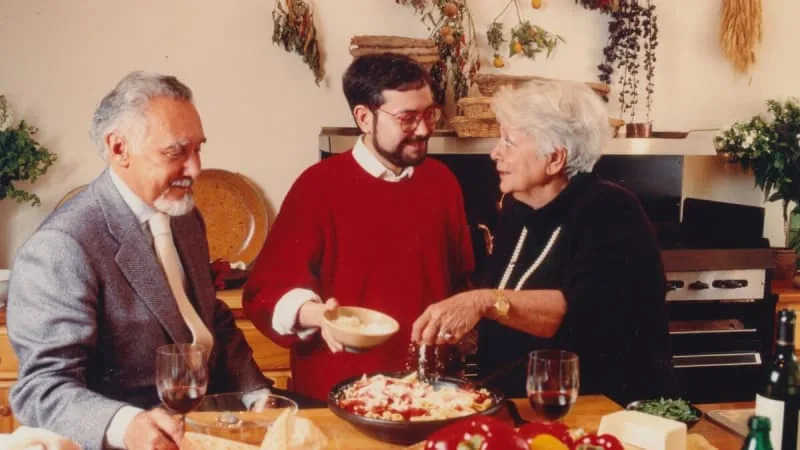
Giuliano Hazan, 66, often referred to by his late mother as her primary taste-tester, continues to teach her recipes to students in his home in Sarasota and at three villas in Italy: Veneto, Tuscany and Piedmont.
Miller, a filmmaker for the past 30 years, has been preparing Marcella Hazan’s recipes a few times a week for as long as he can remember.
“I often return from the local farmers market with fresh ingredients, and as we arrive in the kitchen to make dinner, I ask, ‘What would Marcella do?’”
The idea for the film came to him about six years ago while he was preparing Marcella Hazan’s ravioli recipe.
“As a filmmaker, I’m drawn to stories of fascinating people who changed our world for the better,” he said. “I couldn’t imagine a better protagonist for a film than Marcella. Marcella is not a household name — yet! I’m so pleased that my film is introducing her to viewers everywhere.”
During her life, Marcella Hazan published six cookbooks; “Essentials of Classic Italian Cooking,” published in 1992, was listed by The New York Times as one of the 25 most influential cookbooks of the century. For all of her books, she handwrote the recipes in Italian in a spiral notebook. Then, her husband translated them into English.
Giuliano Hazan didn’t start cooking until he left home and got hungry. He has since written five of his own cookbooks based on his mother’s techniques. He doesn’t have a favorite recipe, but, he allowed, if he goes a few days without pasta, he starts to crave it.
Marcella and Victor Hazan moved to Longboat Key after living and teaching in New York and Italy to be closer to her son, his wife, Lael, and their two grown daughters, Gabriella and Michela. Marcella Hazan died there in 2013.
We visited Giuliano Hazan on a recent morning. He was cleaning up from a private cooking class at his home the night before. Later that day, he drove to Longboat Key to make lunch for his dad, now 96: spaghetti with scallops from his cookbook “Thirty Minute Pasta: 100 Quick and Easy Recipes.”
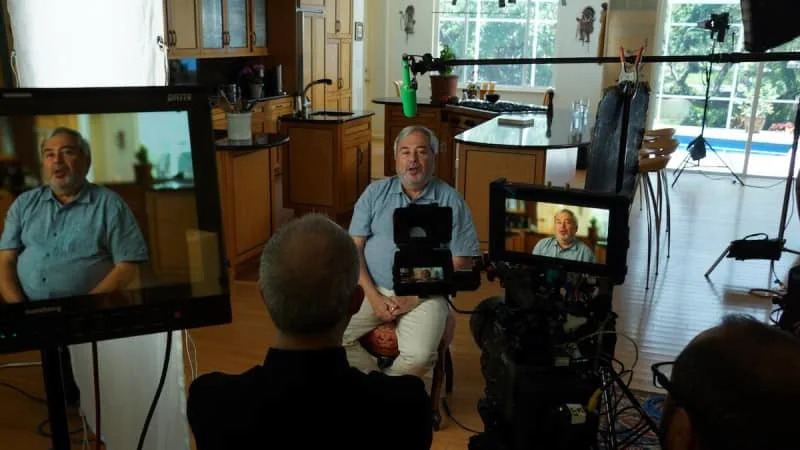
In addition to teaching and hosting, Giuliano Hazan has been attending numerous film festivals and events to promote the film he partially narrates. The Hazans gave total control of the film to Miller, handing over boxes of Marcella Hazan’s handwritten recipes, photos and reels of old family footage.
“Getting to know Giuliano been a great joy,” Miller said. “Giuliano has a rare combination of being enormously knowledgeable and deeply soulful. The stories he tells of his mother are steeped in emotion and love, and his gift as a raconteur and a teacher makes him a perfect guide to Marcella’s story.”
The family was happy with the film, Giuliano Hazan said. Miller communicated with them and previewed rough cuts. “He really wanted to make sure he got it right.”
Much of the material is now in the hands of the Smithsonian National Museum of American History, where the documentary premiered in April. Next year, when the museum celebrates the Declaration of Independence’s 250th anniversary, Marcella Hazan’s copper pot will be part of a special exhibit.
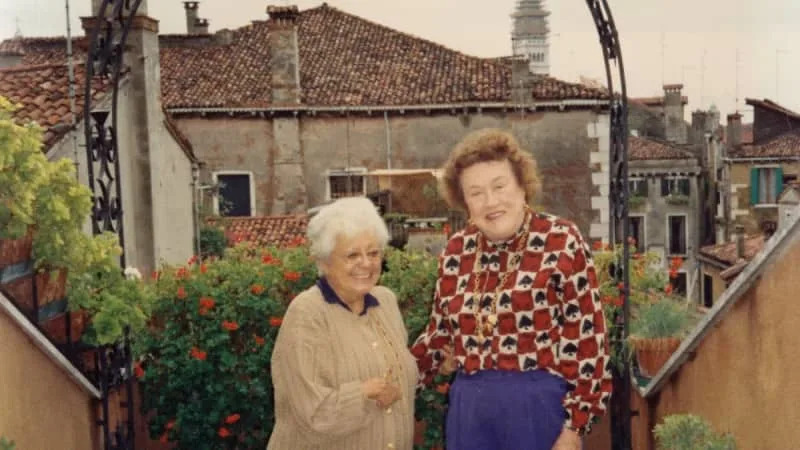
In the meantime, Giuliano Hazan is busy hosting classes in his considerable Sarasota kitchen, named villa felice, or “happy villa.” In contrast, his mother’s kitchens were always small, though well-equipped. The documentary details her quest to find quality ingredients wherever she lived and bring out the best flavors in everything she prepared. One of her most famous recipes is her basic tomato sauce, where the onion is removed before the sauce is eaten. Google “Bolognese” and hers is one of the first recipes to pop up.
In the film, viewers are treated to renowned chefs preparing that sauce, along with Marcella’s other famous recipes, including roast chicken with lemons.
“We always ate well, but I was used to that,” Giuliano Hazan said.
In addition to his current schedule of promoting the documentary and hosting cooking classes, Giuliano Hazan is developing recipes and planning to lead future cooking programs on cruise ships.
Those recipes, in homage to his mother, will be simple, with the freshest ingredients on hand.
“The lessons she has to offer go beyond how to prepare Italian food,” Miller said. “Marcella was a master teacher and demanding taskmaster whose lessons taught not just kitchen technique, but a broader understanding of tradition, generational knowledge and the power of a beautifully lived life.”
“Marcella” is available on the PBS app for PBS Passport members as well as on other streaming platforms, including Apple TV and Amazon Prime Video.
For more information about Giuliano Hazan’s classes locally and abroad, visit giulianohazan.com.
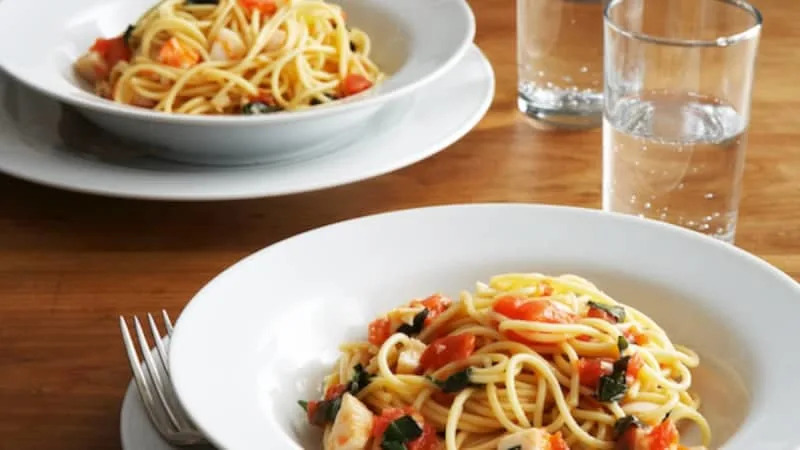
From “Thirty Minute Pasta: 100 Quick and Easy Recipes” by Giuliano Hazan
1½ pounds fresh tomatoes
1 medium clove of garlic
⅛ teaspoon hot red pepper flakes
3 tablespoons extra-virgin olive oil
Salt
1 pound sea scallops
1 pound spaghetti (linguine is also good)
12 fresh basil leaves
Fill a pot for the pasta with about 6 quarts of water, place over high heat and bring to a boil.
Peel the tomatoes and coarsely chop them. Peel the garlic clove and finely chop it.
Put the garlic, hot red pepper flakes and the olive oil in a 12-inch skillet and place over medium-high heat. As soon as the garlic begins to sizzle, add the tomatoes. Season with salt and cook until the liquid the tomatoes release has evaporated, 10 to 12 minutes.
While the tomatoes are cooking, cut the scallops into ¼-inch dice.
When the tomatoes are ready, add about 2 tablespoons salt to the boiling pasta water, add the spaghetti and stir until all the strands are submerged. Cook until al dente.
Shred the basil leaves and add them to the pan with the tomatoes. Raise the heat to high and add the scallops. Cook until the scallops are done, 1 to 2 minutes, then remove from the heat.
When the pasta is done, drain well, toss with the sauce and serve at once.
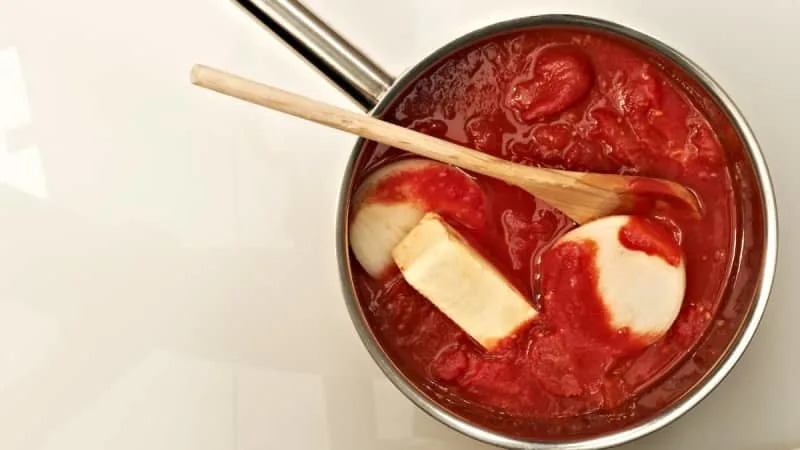
From “Essentials of Classic Italian Cooking: 30th Anniversary Edition” by Marcella Hazan
1 28-ounce can whole tomatoes, no salt or herbs added
5 tablespoons unsalted butter
1 small white onion, peeled and cut in half
Kosher salt
To serve:
Cooked pasta
Shaved Parmesan cheese
Black pepper
Place the tomatoes, butter, onion halves and a pinch of salt in a large saucepan and bring to a simmer over medium-high heat.
Lower the heat to maintain a gentle simmer and cook, stirring and crushing the tomatoes lightly with the back of a spoon occasionally, until droplets of fat appear on the surface of the tomatoes, about 45 minutes.
Remove and discard the onion halves.
Serve over hot pasta with Parmesan cheese and black pepper, if desired.

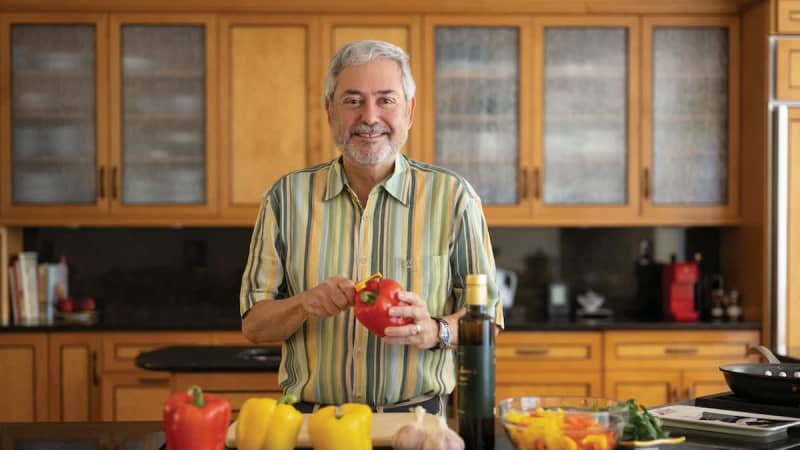
Dining and Cooking